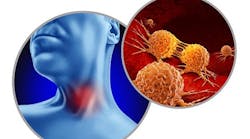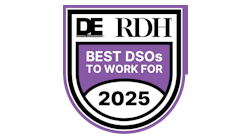Exceptional outcomes after orthodontic treatment closely follow patients’ overall compliance, especially concerning oral hygiene procedures. Poor oral hygiene standards hinder maintaining healthy periodontium, cause bacterial plaque accumulation, and eventually lead to white spot lesion formation in orthodontic patients. In addition, I have often observed that tooth movement response to orthodontic forces is subpar in patients with compromised oral hygiene.
More "Chairside Impact":
- Gingi-Pak Perio Armor 1.7% hydrogen peroxide cleansing gel
- TheraBreath Dry Mouth Oral Rinse
- LumaDent ErgoPrism loupes with waveLUX headlight
Orthodontics and oral hygiene
With increasing numbers of adults seeking orthodontic treatment, oral hygiene maintenance is a hot topic for busy orthodontic practices. As a practicing orthodontist, I always seek innovative tools to make life easier for our patients. What do we already know about powered toothbrushes?
We know, through many systematic reviews and meta-analyses, that there is moderate certainty that powered toothbrushes reduce plaque and the incidence of gingivitis over the short and long term. While many powered toothbrushes, depending on their mode of action (i.e., oscillating-rotating or the shape of the brush head), may not apply to the standard hygiene maintenance of orthodontic patients, Curaprox’s Hydrosonic Pro caught my attention.
Hydrosonic Pro brush heads
The Hydrosonic Pro has three brush heads: power, sensitive, and single. While the first two are aimed at regular toothbrushing with sonic action and seven modes ranging from 44,000 to 84,000 brush head movements, the single-tufted brush head could easily reach concealed areas where bacteria and plaque accumulation readily occur in the niches between the teeth, brackets, attachments, and wires.
Curen bristles
The "single," extra small brush head could make a potential difference in orthodontic patients for tooth-by-tooth and gumline cleaning, considering that all brush heads are made of ultrafine filaments instead of traditional nylon bristles. The single brush head uses the finest Curen bristles, each measuring 0.088 mm in diameter. These ultrafine filaments do not absorb water as much as nylon bristles do, and therefore can keep their original texture when wet. As you can imagine, standard bristles usually make brush heads too stiff or thick. In addition, regular bristles may not remove plaque adequately because they do not reach the gumline correctly. When directed at hollowed-out or confined spaces, the resulting pressures might cause abrasions or damage the periodontium. Curaprox's patented Curen bristles adjust to the dental anatomy without hurting the gingiva or causing damage, even under the most substantial forces.
I tested the innovative and teardrop-shaped single brush head. The adaptability of the bristles around the gumline is impressive and provides an intense sulcus cleaning without feeling any excessive pressure. I found the bristles soft, yet very effective. I could only imagine how comfortable using the single brush around brackets, attachments, and orthodontic wires would be. Similarly, the single brush head would be an excellent tool for cleaning around miniscrews for easy access.
I look forward to reading a randomized clinical trial of this product targeting the orthodontic patient population, and I wish the Hydrosonic Pro existed during my orthodontic treatment.
Editor's note: This article appeared in the November/December 2023 print edition of RDH magazine. Dental hygienists in North America are eligible for a complimentary print subscription. Sign up here.
Sercan Akyalcin, DDS, PhD, is a faculty member and program director at the Harvard School of Dental Medicine. He received his DDS and PhD degrees from Ege University School of Dentistry and completed clinical training in the Orthodontic Program at The University of Texas Health Science Center at Houston. Dr. Akyalcin has published numerous peer-reviewed papers, contributed to published books and textbooks, and serves on the editorial boards of orthodontic and dental journals.






